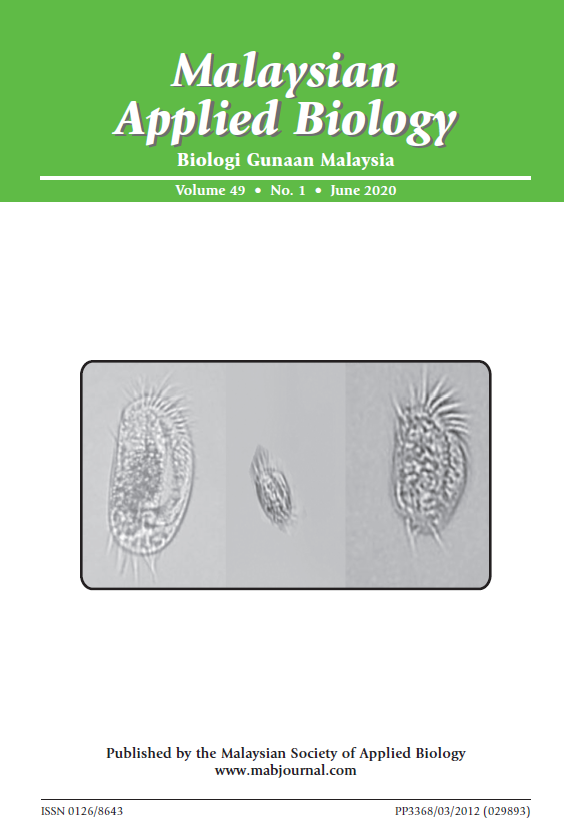ISOLATION AND IDENTIFICATION OF THE BACTERIAL COMMUNITY ASSOCIATED WITH THE ROVE BEETLE, Paederus fuscipes CURTIS (COLEOPTERA: STAPHYLINIDAE) IN PENANG
Keywords:
Endosymbionts, Paederus, Paederus fuscipes, Pseudomonas, 16srRNA geneAbstract
The rove beetle, Paederus fuscipes Curtis has caused tremendous dermatitis once unintentionally crushed against human skin due to their potent toxic released called paederin produce by the endosymbiont bacteria. The genus Pseudomonas was hypothesized to be the endosymbiont bacteria involved in the production of paederin in Paederus. However, no extensive studies have been performed to investigate the existence of other bacteria, and the relationship between the endosymbiont counts amongst male and female P. fuscipes beetles. We found that P. fuscipes harbours surprising numbers of bacteria diversity with a total of 20 different bacterial species identified. Bacillus, Serratia, Staphylococcus, and Pseudomonas bacteria were the dominated genus found in all collected beetles from all light trap locations. However, only Pseudomonas aeruginosa Migula is the medically important species and is commonly known to cause severe dermatitis lesions to humans. Our results revealed the P. aeruginosa counts cultured on Pseudomonas medium was found higher total mean bacteria counts in fuscipes females (2.58 x 105 ± 2.73 x 104 cell) compared to male beetles (5.68 x 104 ± 3.70 x 103 cells). We demonstrated that a large diversity of bacterial community has been isolated from both male and female P. fuscipes, however P. aeruginosa colonies were frequently detected in females compared to male beetles. These results can be used in future studies to investigate the possible impact of these bacterial counts on the concentration of paederin produced in P. fuscipes.
Downloads
Metrics
Published
How to Cite
Issue
Section
Any reproduction of figures, tables and illustrations must obtain written permission from the Chief Editor (wicki@ukm.edu.my). No part of the journal may be reproduced without the editor’s permission





















